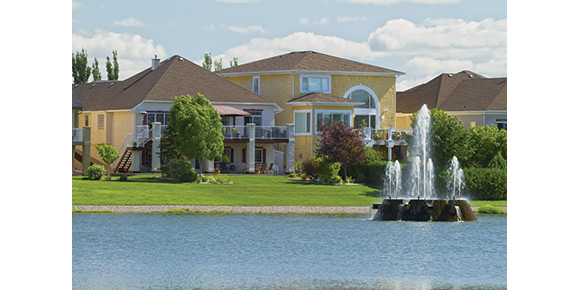You never know what you may uncover when you look back into the annals of history. Recently, there was an attempt to find old photos of a past member of WinnipegREALTORS®. Besides actually finding one or two, by chance we came across an interesting chart chronicling average MLS® house prices going back to 1965.
There has been 50 years of seeing prices rise, many, albeit, quite modestly, if hardly at all. Some yearly increases have been more robust and percentage-wise significant for a market that is more known as steady and reliable when compared to the up-and-down cycles of some Canadian real estate markets.
There have also been a few years when prices almost stood still, or dipped ever so slightly, to hardly cause any concern that a correction was about to take hold in Winnipeg’s real estate market.
The only three years in the last 50 to see an actual decline in the average MLS® house price were in 1982, 1990 and 1995.
How much of a decline?
In 1982, the average house price dropped from $55,231 in 1981 to $53,994, 1990 fell from $87,021 in 1989 to $85,018, and 1995 slipped from $89,352 to $87,387.
In two of these three years of price declines — 1982 and 1995 — a strong rebound followed the next year. This was especially true in 1983, when the average sale price increased by around $4,500, or eight per cent.
Only 1990 experienced a repeat of the average price in 1991 and 1992, which has been the case throughout Winnipeg’s last 50-year history of the housing market.
Nineteen sixty-six hardly budged from the $13,588 average MLS® house price in 1965, and 1980 resulted in a very modest increase over 1979’s average price of $49,823.
When average house prices saw their biggest sustained jump, owing to issues identified in WinnipegREALTORS® 2011 position paper, entitled Manitoba’s Rental Housing Shortage, was from 2002 to 2011. In this nine-year period, prices went up from $104,202 to $256,748.
Some unique circumstances prevailed during this period, such as an extremely tight rental market and strong immigration resulting from the success of the provincial nominee program. Let’s also not forget that Manitoba had, and still does have, one of the lowest unemployment rates in the country. Like everywhere else in the country, the Winnipeg market has also benefited significantly from very the low mortgage rates that took hold in the first decade of the millennium.
Even with six consecutive years of double-digit percentage increases from 2002 to 2008 and then again in 2010, prices have since then clearly leveled off. We have been in far more balanced market conditions, with both 2014 and 2015 showing price gains of less than two per cent for each year.
When you compare Winnipeg’s prices to other cities across the country, we still have some of the most affordable house prices. In July 2015, 56 per cent sold for under $300,000 and another 16 per cent sold in the next higher price range from $300,000 to $349,999.
In comparison, only 16 homes in Calgary sold for under $300,000, or about one per cent, and another 54 homes, or roughly four per cent, sold from $300,000 to $349,999.
Balanced market conditions will keep our house prices in check as we forecasted earlier in the year. It will be another year in Winnipeg’s 50-year market history showing a more pedestrian march forward, which is a trend that has been followed for half a century.



